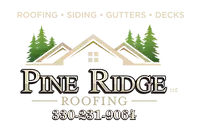Dennison Roof Damage by Weather Conditions and Insurance Claims - A Comprehensive Guide
Your residence, your haven, relies on a robust roof for its safety and security. But when the inevitable roof damage by weather conditions occurs, understanding the diverse types of damage caused by the elements, navigating the insurance claim process, and implementing effective roof maintenance practices become pivotal in preserving your investment.
This thorough guide is designed to lead you through the essentials, empowering you to shield your home and confidently manage “roof damage by weather conditions and insurance claims.”
In Dennison, roof damage is a prevalent consequence of severe weather conditions like storms, high winds, tornadoes, and hail. Pine Ridge Roofing is poised to extend support in addressing these challenges.
Key Takeaways
Dennison Roof Damage - Types of Weather-Related Roof Damage
Table of Contents
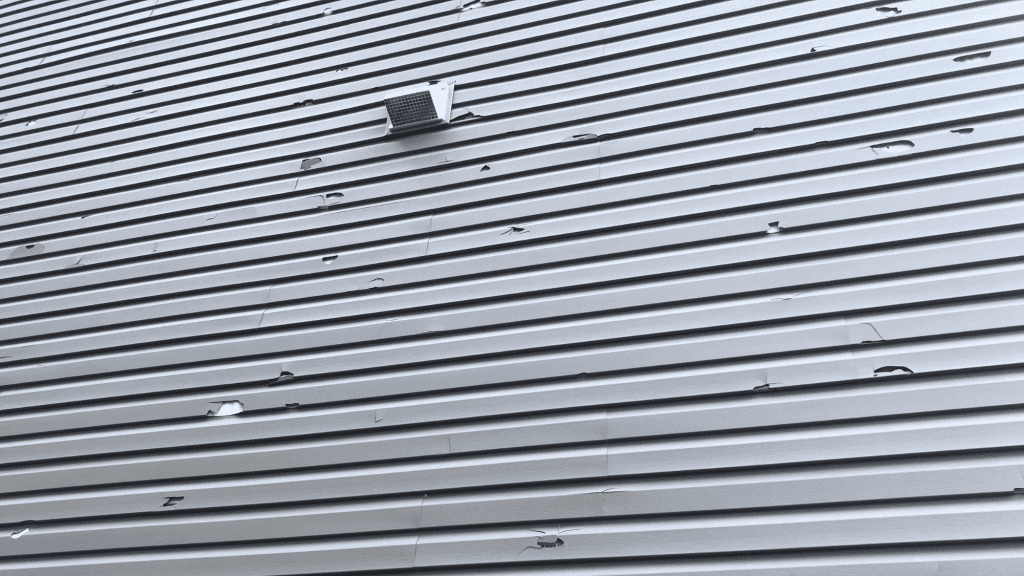
In Dennison, roof damage from unpredictable weather conditions is a prevalent concern. Weather elements such as wind, hail, rain, or snow can wreak havoc on roofs, frequently resulting in insurance claims and the need for expensive repairs or replacements.
Safeguarding your home involves identifying signs of storm damage and understanding how these natural forces affect your roofing materials.
A critical question often arises: Is roof damage covered by insurance? To secure coverage for your roof damage expenses through home insurance, it’s crucial to demonstrate that the damage directly resulted from an extreme weather event.
Wind Damage
In Dennison, roof damage due to high winds can silently compromise the integrity of your roof. This damage may include missing shingles, lifted flashing, or cracked tiles, and in severe cases, the entire roof may be blown away. Though these damages might seem minor initially, they can escalate over time, leading to leaks and structural problems that necessitate navigating the roof insurance claim process.
Repairing an older roof poses its challenges, especially when dealing with less flexible and prone-to-cracking shingles. In such cases, it becomes crucial to involve a qualified roofing specialist for a meticulous roof inspection and to address the damage promptly.
Understanding the specifics of wind insurance coverage in your homeowner’s insurance policy is vital for preparedness, particularly in adverse weather conditions like storms.
Wind damage can result from various weather events such as severe storms or hurricanes. Regularly monitoring your roof after such events is imperative, and quick action is essential upon noticing visible signs of wind damage. If a substantial tree branch is found on your roof, it’s recommended to have it professionally removed to prevent further damage and potential roof damage claims.
Hail Damage
When a hailstorm makes landfall, it can wreak havoc on your roof, causing dents, punctures, and shingle granule loss. Even though this kind of damage may go unnoticed by the untrained eye, its impact on your roof’s lifespan and effectiveness can be substantial. Hail has the ability to bruise or crack the shingle mat, creating vulnerabilities that allow water to gradually infiltrate your home, potentially resulting in the need for a roof claim.
Roof inspection for hail damage can be challenging, especially after a storm. Insurance adjusters and roofing professionals often consider metal components surrounding the roof, such as:
- Roof vents
- Pipe boots
- Gutters
- Roof flashing
It is essential to exercise caution and avoid inspecting the roof immediately after a storm, especially if it has a steep slope. In cases of significant hail damage, swift action, such as securing tarps to the roof, is imperative to prevent further deterioration from rainwater.
Rain and Snow Damage
Rain and snow may seem harmless, but they can wreak havoc on your roof if not properly managed. Here are some potential issues caused by rain and snow:
- Leaks and water damage
- Structural issues
- Roof collapse due to the weight of accumulated snow
- Ice dams, which can damage your roof and gutters
It’s important to take steps to protect your roof from these potential problems.
To prevent damage from rain and snow, adopting preventive measures like regular inspections, proper ventilation, and robust waterproofing is essential. Being proactive in maintaining your roof and having a clear understanding of homeowner’s insurance coverage alternatives, such as Actual Cash Value (ACV) and Replacement Cost Value (RCV) policies, can go a long way in mitigating the potential for expensive repairs or replacements due to weather-related issues.
Dennison Roof Damage - Insurance Coverage for Weather-Related Issues
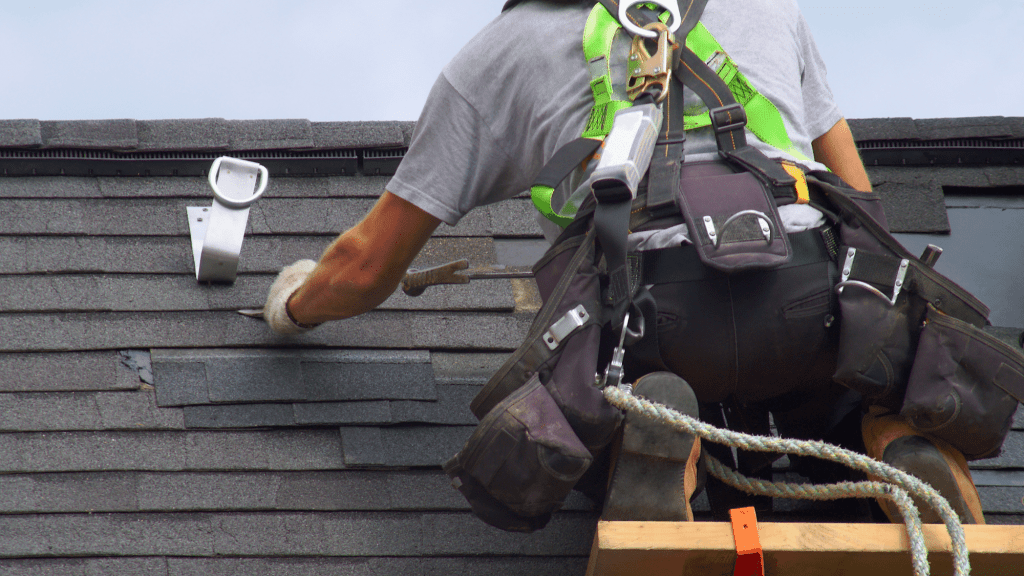
The financial safety net provided by the insurance company is indispensable in the wake of unforeseen roof damage in Dennison, OH. However, grappling with the nuances of insurance coverage can be an intimidating prospect. Familiarizing yourself with policy nuances, such as Actual Cash Value (ACV) and Replacement Cost Value (RCV), and staying mindful of typical exclusions can significantly impact how your claim is addressed and ultimately settled.
Policy Types: ACV vs RCV
An Actual Cash Value (ACV) policy is structured to cover the replacement of your roof by reimbursing you for its depreciated value, after deducting the applicable deductible. This implies that you’ll receive compensation based on the current value of your roof at the time of the damage. However, it’s crucial to note that this amount may not suffice to cover the entire cost of repairs or replacement.
On the other hand, a Replacement Cost Value (RCV) policy provides more comprehensive coverage. It covers the complete cost of roof replacement, offering funds for a new roof based on current market prices and materials. Under an RCV policy, you’ll initially receive a check for the actual cost value of your roof. After the roof replacement is finalized, a second check for the remaining amount will be issued, subject to meeting all specified requirements.
The choice of a suitable policy for your needs can greatly impact the payout you receive in the event of a roof damage claim, making it an important decision. It is essential to:
- Review your insurance policy
- Understand the differences between ACV and RCV
- Consult with your home insurance company to ensure you have the appropriate coverage for your specific situation.
Common Exclusions
Preserving your home from weather-induced roof damage in Dennison, OH, with homeowners insurance is a wise move, but being mindful of common exclusions is equally crucial for a seamless claims process, such as:
- Improper installation, deviating from manufacturer instructions or local building codes, is a typical exclusion that can hasten wear and tear, potentially voiding your roof’s warranty.
- Neglecting routine maintenance, such as clearing gutters and removing debris, might result in damages not covered by your policy.
- Some policies may also exclude specific weather events, like hurricanes or earthquakes.
A comprehensive review of your insurance policy is essential to understand these exclusions and secure proper coverage for your roof. Inadequate maintenance occurs when regular inspections and maintenance, following manufacturer guidelines and local codes, are overlooked, possibly causing premature deterioration and voiding warranties.
Understanding these exclusions and ensuring proper roof installation, maintenance, and protection against excluded weather events are critical steps to avoid potential claim denials. Staying informed and taking a proactive approach to roof care can minimize the risk of expensive repairs or replacements due to weather-related damage.
Dennison Roof Damage - Filing an Insurance Claim
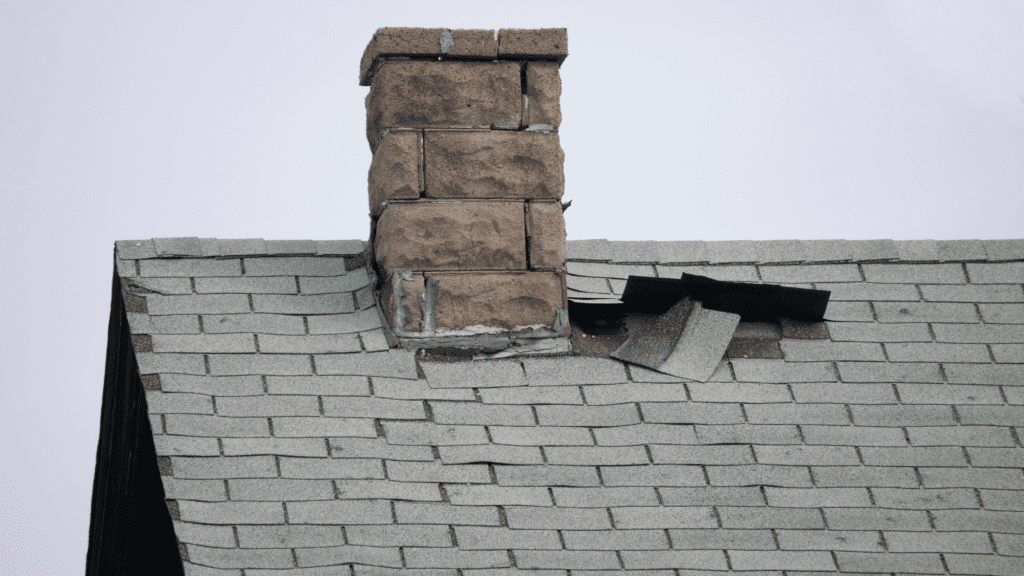
Navigating the process of filing an insurance claim for roof damage in Dennison, Ohio requires a well-thought-out approach. From meticulous documentation of the damage to effective collaboration with insurance adjusters and making wise decisions when choosing a roofing contractor, each step is crucial for a successful claims process.
This guide provides a comprehensive overview, guiding you through the necessary steps and offering valuable tips to ensure a smooth and successful insurance claim experience for roof damage.
Documenting the Damage
Thorough documentation is a key aspect when initiating an insurance claim for roofing damage. Here’s a guide to follow:
- Photograph the affected areas extensively, focusing on any missing shingles, raised flashing, or damaged tiles.
- Create a comprehensive list of the damage, accompanied by detailed notes, including dates, times, and relevant weather conditions contributing to the damage.
- If preventive measures have been implemented, such as using tarps on the roof, document these measures through photographs.
Following the documentation process, seek an estimate from a certified roofing contractor to determine the cost of repairs or replacement. This estimate not only provides clarity on the damage extent but also serves as crucial documentation when presenting your claim to the insurance company. Maintaining a thorough and precise record of the roofing damage significantly enhances the chances of a successful claim.
Working with Adjusters
In Dennison, roof damage evaluation involves the integral role of insurance adjusters in determining the value of your claim payout. Collaborating effectively with these adjusters is paramount for securing the best possible outcome for your claim. It’s crucial to provide accurate information, maintain thorough records of all interactions and pertinent documents, and uphold honesty throughout the process.
When faced with a denied claim, exploring various resolution options is essential:
- Consider asking your insurance company for a different adjuster to obtain a second opinion.
- Alternatively, engaging a structural engineer for a comprehensive inspection and evidence of the damage is a viable step.
- As a last resort, legal avenues can be pursued.
Understanding the adjusters’ role and being well-prepared to work with them increases the likelihood of a successful claim. This ensures you receive the necessary coverage to repair or replace your roof damaged in Dennison.
Choosing a Reputable Roofing Contractor
Opting for a reputable roofing contractor is paramount to ensuring high-quality work and a seamless insurance claims process. When researching roofing contractors for insurance claims, it’s crucial to consider their experience with claims, turnaround times, and their ability to collaborate with adjusters. A competent roofing contractor excels in accurately documenting damage according to the specific requirements of insurance companies and providing expert assessments.
Choosing a local and trustworthy roofing contractor, such as Pine Ridge Roofing, provides peace of mind knowing that your roof repair or replacement is in capable hands. Their team of certified roofers and insurance specialists is prepared to assist with storm repair, restoration, and insurance claims in Dennison, OH, and the surrounding areas. Opting for an experienced roofing contractor is a sure way to ensure the safety and integrity of your home.
Dennison Roof Damage - Preventative Measures and Maintenance
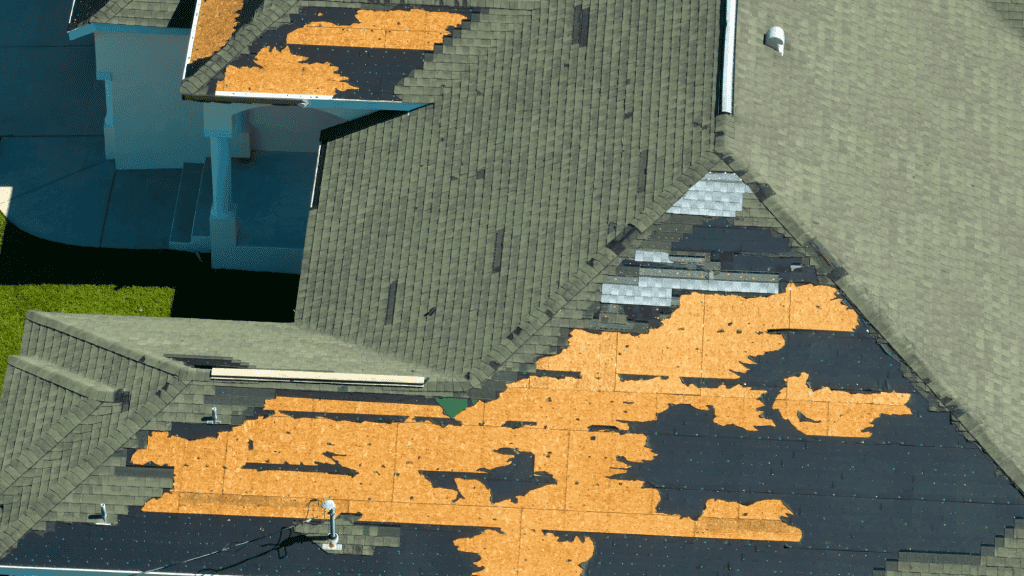
Shielding against the financial fallout of weather-induced roof damage, insurance serves as a vital resource. However, to steer clear of substantial repair expenses, embracing preventive measures is paramount. Consistent inspections, ensuring adequate ventilation, and investing in waterproofing contribute significantly to upholding your roof’s optimal state. This proactive approach not only minimizes the likelihood of weather-related damage but also extends the lifespan of your roofing system.
Routine Inspections
Regular roof inspections serve as an effective method to spot and tackle potential issues before they escalate into significant problems. Inspections should evaluate the roof for signs of:
- Deterioration
- Missing or damaged shingles
- Debris in the gutters
- Roof ponding
It is recommended that routine roof inspections be conducted at least 2 times a year or more frequently if the roof is exposed to extreme weather conditions.
By staying proactive with routine inspections, you can address minor issues before they escalate, ultimately saving money by avoiding expensive repairs or replacements. Hiring a reputable roofing contractor to perform these inspections can provide an expert assessment of your roof’s condition and help you maintain its integrity for years to come.
Call us now and schedule your free roof inspection with Pine Ridge Roofing.
Proper Ventilation and Waterproofing
Preventing moisture buildup, ice dams, and other weather-related roof damage hinges on the implementation of proper ventilation and waterproofing practices. This includes:
- Ensuring good indoor air quality
- Implementing effective home ventilation
- Using exhaust fans and air purifiers
- Installing a reliable ventilation system
- Properly attaching roof ventilation products.
Inadequate attention to these aspects may result in moisture accumulation and ice dams, potentially leading to costly repairs and replacements. By prioritizing proper roof ventilation and waterproofing, you can effectively reduce the risk of damage and maintain the performance and longevity of your roofing materials.
Pine Ridge Roofing: Your Partner in Roof Repair and Insurance Claims

Pine Ridge Roofing, serving Dennison, Ohio, and surrounding areas, specializes in:
- Storm damage repairs
- Insurance claims
- Emergency inspection
- Tarping services
- Assistance with insurance claims for weather-related roof damage
- Roof replacements
- Siding repair and replacement
- Gutter repair and replacement
- Leaf Guard Installation
- Deck building
Over the course of 25 years, our team, consisting of certified roofers and insurance specialists, has garnered invaluable experience in delivering unmatched roof repairs. Our primary goal is to protect and restore your home, especially in the aftermath of weather-related damage events.
Emergency Inspection and Tarping Services
When signs of roof damage arise, arranging a complimentary emergency inspection through Pine Ridge Roofing becomes crucial. This inspection aids in gauging the scope of the damage, allowing for informed decisions on necessary repairs or replacements. Our adept professionals diligently scrutinize your roof, detecting issues like missing shingles, raised flashing, or fractured tiles that demand immediate attention.
In addition to our emergency inspections, Pine Ridge Roofing extends the following services:
- Our tarping services offer interim protection, mitigating further harm to your roof.
- Respond promptly by securing your roof with tarps to curtail the potential for additional damage.
- We ensure your residence stays secure and sound during the insurance claim process.
Insurance Claim Assistance
Navigating the insurance claim process can be overwhelming, but Pine Ridge Roofing is here to help. They offer the following services:
- Assisting with insurance claims
- Representing homeowners
- Negotiating with insurance companies
- Providing quality roof replacement services
Their expertise in insurance claims ensures that you receive the best possible outcome for your claim, allowing you to focus on what matters most: the safety and well-being of your family.
Pine Ridge Roofing’s insurance claim assistance includes:
- Scheduling an emergency inspection
- Tarping damaged areas
- Representing the homeowner and meeting the insurance adjuster at the property.
- Negotiating with the insurance company
- Replacing the roof with top-notch products, such as Owens Corning shingles and synthetic felt
With Pine Ridge Roofing by your side, you can trust that your roof repair or replacement will be handled professionally and efficiently, giving you peace of mind in knowing that your home is protected.
Summary
Weather-related roof damage in Dennison, OH can be a daunting challenge for any homeowner. Understanding the types of damage, navigating the insurance claim process, and maintaining your roof through preventative measures are all essential steps in protecting your home. Armed with the knowledge provided in this comprehensive guide and the assistance of a reputable roofing contractor like Pine Ridge Roofing, you can confidently face any weather-related roof damage, knowing that your home and family are well-protected.
Frequently Asked Questions
Does Home Insurance Cover Roof Storm Damage?
The extent of coverage for roof storm damage under your home insurance policy is determined by the details specified in the plan. Generally, insurance plans encompass protection against damage caused by hail, wind, destruction from falling objects, and internal damage due to roof storm damage. For instance, if a storm leads to the destruction of your roof and subsequent rainwater damage to the ceiling, your insurance policy is designed to cover the repairs for both the roof and ceiling.
Are blown-off shingles covered by insurance?
Insurance companies often grasp the critical importance of a sound roof and usually extend coverage to encompass the expenses linked to replacing a roof, especially when damage occurs due to unpreventable factors like the dislodging of shingles.
What is considered wind damage to shingles?
Shingles, when subjected to strong winds, can exhibit telltale signs of damage such as tearing, creasing, or detachment from the roof structure. This vulnerability is more pronounced in three-tab shingles, attributed to the repetitive lifting or flapping they undergo. It’s important to note that unsealed shingles are generally immune to these issues unless accompanied by visible physical mat damage.
My roof doesn’t leak. Does this mean my roof is okay?
Simply because your roof isn’t showing leaks doesn’t mean it’s in optimal condition. Roof damage can linger unseen, and leaks may not become apparent until a future rainfall. At Pine Ridge Roofing, our adept professionals utilize specialized tools and techniques to uncover moisture beneath roofing materials and identify hidden areas of damage. Don’t let concealed issues persist unnoticed—contact us for a free inspection today!
What is the most common roof damage?
A common challenge is roof damage in Dennison, Ohio, particularly manifested as leaking roofs. This is frequently attributed to broken shingles, and inadequate flashing near chimneys or gutters, and around vents or pipes.
